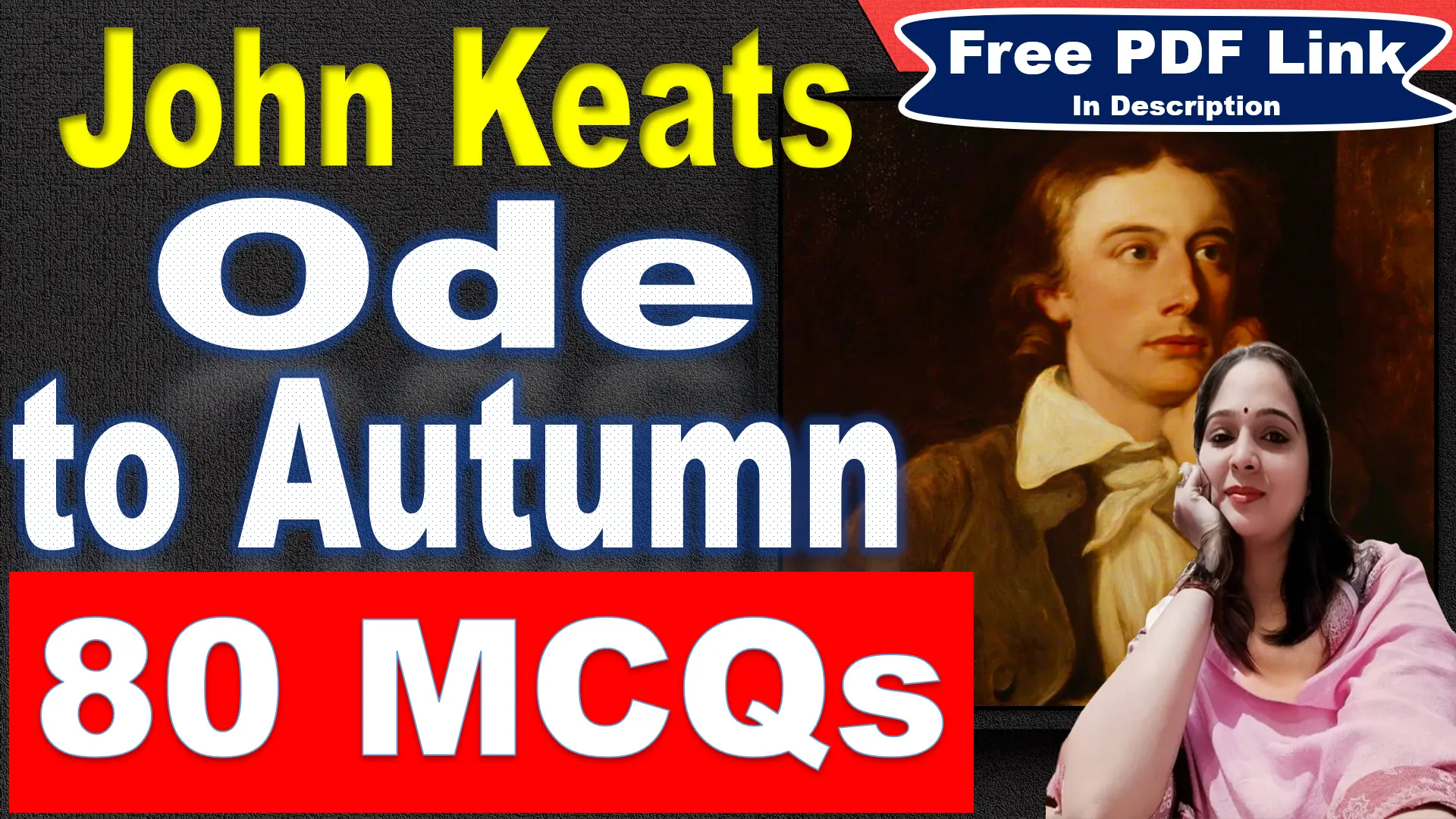Sonnet 1 by William Shakespeare Questions and Answers
Very Short Answer Questions
Q: Who wrote Sonnet 1?
A: William Shakespeare.
Q: What is the main theme of Sonnet 1?
A: The importance of procreation to preserve beauty.
Q: What does “fairest creatures” refer to?
A: Beautiful people.
Q: What is meant by “increase” in the first line?
A: Having children.
Q: What is “beauty’s rose” a metaphor for?
A: The transient nature of beauty.
Q: What does “riper” symbolize in the sonnet?
A: Maturity and aging.
Q: Who is the “tender heir” mentioned in the poem?
A: The child who inherits beauty.
Q: What does “contracted to thine own bright eyes” criticize?
A: Narcissism.
Q: What does “self-substantial fuel” signify?
A: Self-sufficiency and self-absorption.
Q: What does “making a famine where abundance lies” imply?
A: Wasting potential by being selfish.
Q: What is the tone of the sonnet?
A: Admonishing and urgent.
Q: What does the speaker urge the young man to do?
A: Pity the world and procreate.
Q: How does the speaker describe the young man’s beauty?
A: As the world’s fresh ornament.
Q: What does “within thine own bud” symbolize?
A: Unfulfilled potential.
Q: What does “tender churl” mean?
A: A gentle but miserly person.
Q: What is the rhyme scheme of Sonnet 1?
A: ABABCDCDEFEFGG.
Q: What literary device is used in “thy light’s flame”?
A: Metaphor.
Q: What does the speaker warn will happen if the young man remains selfish?
A: He will consume his beauty alone and die, taking it to the grave.
Q: What does the “grave” symbolize in the sonnet?
A: Death and the end of potential.
Q: What is the poem’s central message?
A: To share one’s beauty with the world through procreation.
Short Answer Questions
Q: What is the significance of the metaphor “beauty’s rose” in Sonnet 1?
A: The metaphor “beauty’s rose” symbolizes the fleeting nature of physical beauty. Just as a rose blooms and eventually withers, human beauty is also temporary. By urging the “fairest creatures” to have children, the speaker suggests that procreation can preserve this beauty beyond the individual’s lifetime, much like planting new roses ensures the continuation of their beauty.
Q: How does the speaker view the young man’s self-absorption in Sonnet 1?
A: The speaker criticizes the young man’s self-absorption, suggesting that his narcissism is wasteful and self-destructive. By being “contracted to thine own bright eyes” and feeding his “light’s flame with self-substantial fuel,” the young man creates a “famine where abundance lies.” This means he is selfishly hoarding his beauty instead of sharing it through procreation, thus wasting his potential and legacy.
Q: What is the role of time in Sonnet 1?
A: Time is portrayed as an inevitable force that causes aging and death. The speaker acknowledges that even the most beautiful people (“fairest creatures”) will age (“riper”) and die. However, by having children, they can ensure that their beauty and essence live on in their offspring, thereby defying time’s eroding effects to some extent.
Q: Explain the paradox “making a famine where abundance lies” in the context of Sonnet 1.
A: The paradox “making a famine where abundance lies” highlights the young man’s wastefulness. Despite having abundant beauty, he creates a metaphorical famine by not sharing it through procreation. His selfishness and self-absorption prevent the continuation of his beauty, resulting in a loss of potential that could have been plentifully shared with the world.
Q: How does the speaker use personification in Sonnet 1 to convey his message?
A: The speaker personifies beauty and time to emphasize their transient nature. Beauty is depicted as something that can “die” and needs to be preserved, while time is seen as a force that causes this decay. By urging the young man to have children, the speaker implies that procreation can personify beauty’s ability to outlast time’s destructive effects.
Q: What is the significance of the phrase “within thine own bud buriest thy content” in Sonnet 1?
A: This phrase suggests that the young man is burying his potential and happiness within himself, like a flower that never blooms. By not sharing his beauty and producing heirs, he keeps his potential locked away, resulting in wasted opportunities and unfulfilled contentment. It underscores the theme of wasted potential and the importance of sharing one’s gifts.
Q: What literary devices does Shakespeare use in Sonnet 1 to enhance the theme of procreation?
A: Shakespeare employs metaphors (“beauty’s rose”), personification (beauty and time), paradox (“making a famine where abundance lies”), and vivid imagery (“within thine own bud”). These devices highlight the fleeting nature of beauty, the wastefulness of narcissism, and the necessity of procreation to preserve one’s legacy and beauty.
Q: How does the speaker characterize the young man in Sonnet 1?
A: The speaker characterizes the young man as beautiful and vital, referring to him as the “world’s fresh ornament” and the “herald to the gaudy spring.” However, the speaker also criticizes him as a “tender churl,” a gentle yet miserly person, for hoarding his beauty and not sharing it through procreation. This dual characterization underscores the young man’s potential and his failure to realize it.
Q: What is the tone of Sonnet 1, and how does it contribute to the poem’s message?
A: The tone of Sonnet 1 is admonishing and urgent. The speaker’s critical and pleading attitude towards the young man’s narcissism and selfishness underscores the importance of procreation. This tone enhances the poem’s message that sharing one’s beauty through having children is not only a personal duty but also a benefit to the world.
Q: Discuss the central message of Sonnet 1 and its relevance to the theme of legacy.
A: The central message of Sonnet 1 is the importance of procreation to preserve beauty and legacy. The speaker urges the young man to consider the broader implications of his actions, suggesting that by having children, he can ensure that his beauty and essence live on. This message is relevant to the theme of legacy, as it highlights the idea that one’s impact and contributions can extend beyond their lifetime through their descendants.





